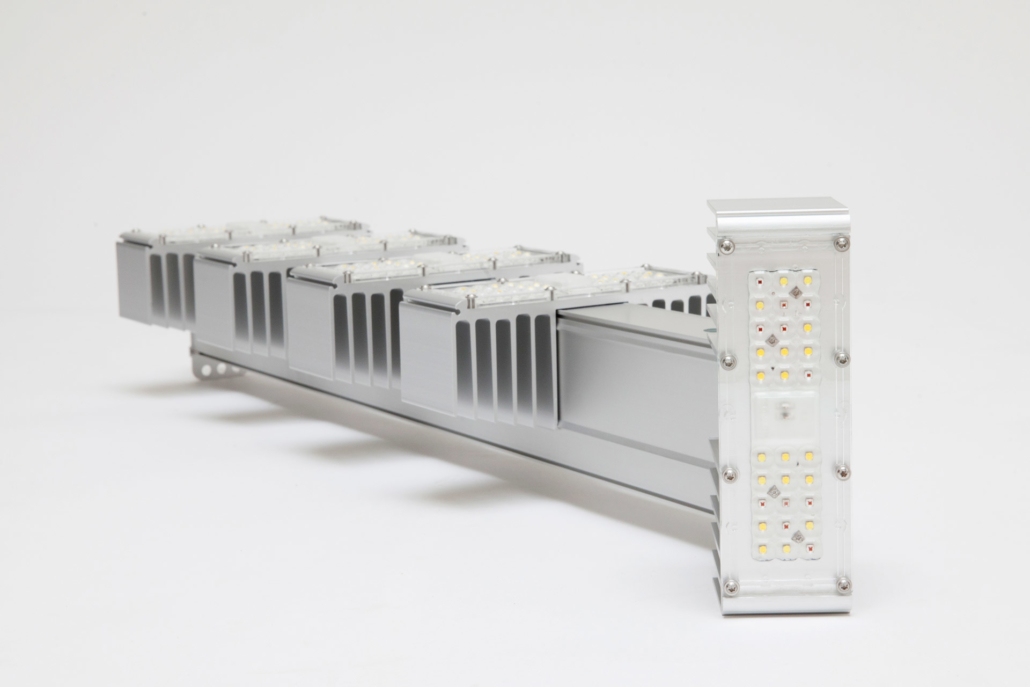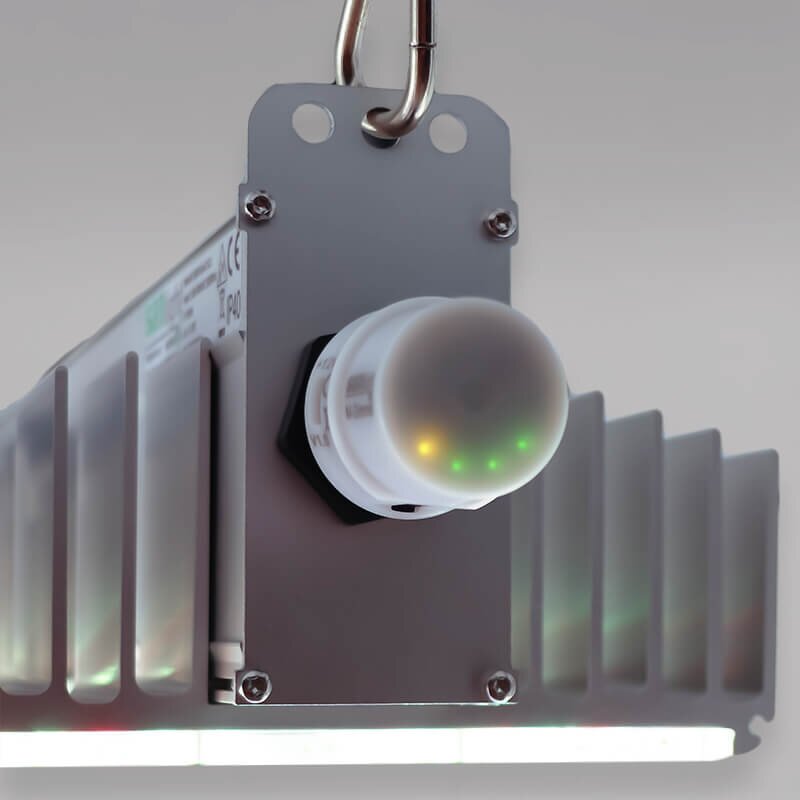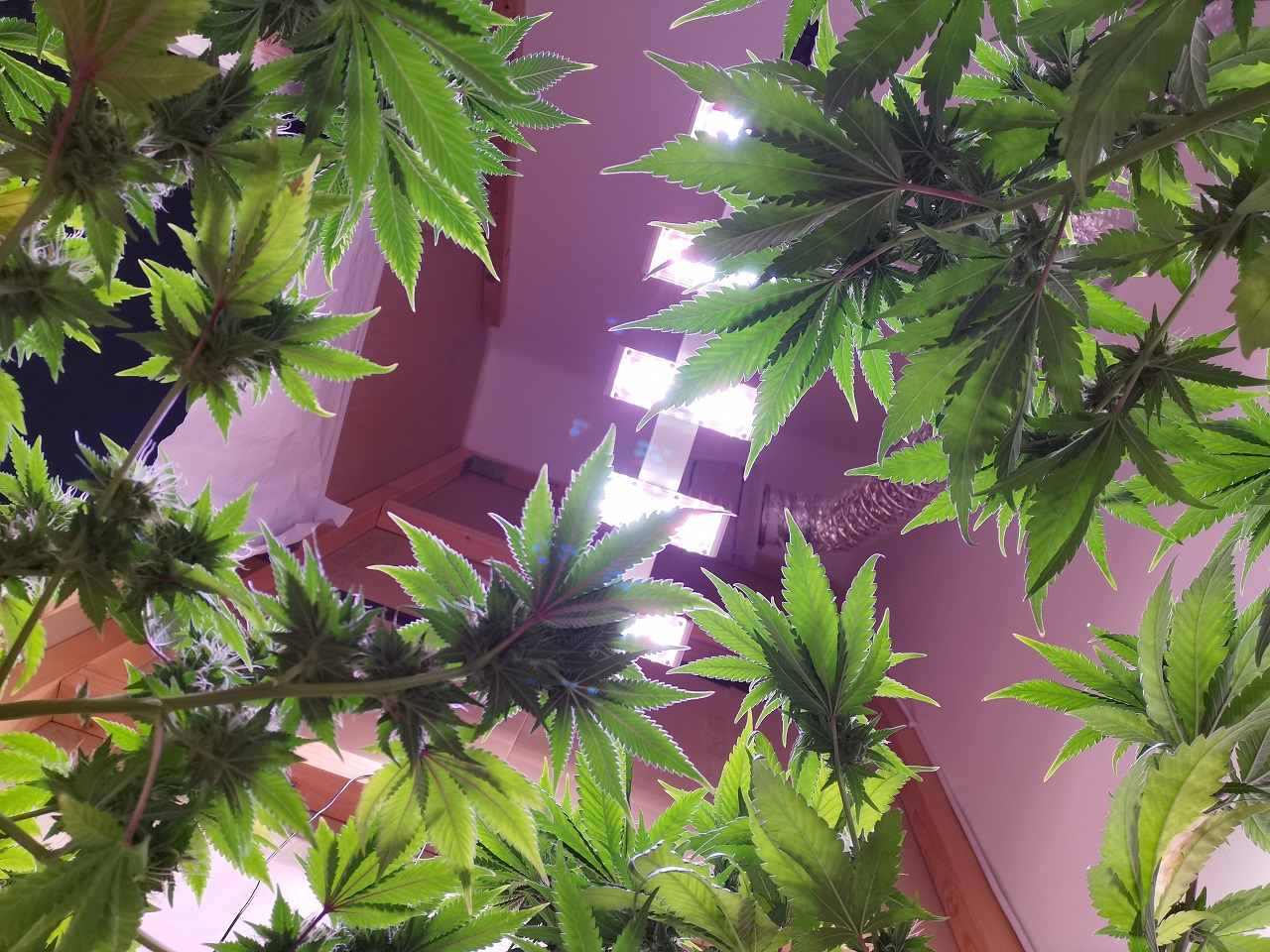In this review, we took a close look at the brand new, second-generation Sanlight Q series from austria. This looks exactly the same, but has hidden some improvements and more light output under the hood. We show you why the Sanlight Q series has become our absolute test winner among LED plant lamps.
With the Q series, the manufacturer Sanlight sets new standards for hobby growers. The Q series is available in three versions: the Q4W, Q5W and the Q6W LED grow lamp. The LED grow lamps make an absolutely convincing and high-quality impression after unpacking.
Sanlight has put a lot of experience into the development of the Q series. All versions have (as usual with Sanlight) passive cooling. The well thought-out construction and the careful selection and combination of LED chips make lights with maximum efficiency.
Delivery
The Sanlight Q modules simply come in a box without any additional extras. When you unpack it, you can say that the Sanlight Q-Series LEDs are “barebone”. Instead of unnecessary cosmetics or useless supplements, the scope of delivery is manageable.
When ordering, you have to make sure to order the power cord separately. By default, none is included in the modules. An infinite number of modules can be operated on one mains cable, in the end the limitation depends on the socket.


Processing
The structure is the same for all models in the Q series. Several aluminum heat sinks and the LED chips embedded in them are attached to an elongated aluminum bar. The number in the model stands for the number of LED bodies. If an L is attached to the back, the module is slightly longer.

The Q1W has one LED body, Q3W three, and so on. The Q3WL and the Q5WL are extra long versions, with which the illumination can be made a little more even with suitable surfaces.
A disadvantage is the 12cm total height of the Q models, which is only caused by the high aluminum beams. The heat sink itself is only 7.9 cm high. According to Sanlight, they are so high because the driver is so big and could only be placed that way.
If you have a low grow box (less than 140cm), you may have space problems. With small grow boxes, every centimeter counts. For comparison: the Pro Emit sunflow LED is just 8cm high and a little wider.

The processing of the LED modules is extremely stable and of high quality. Everything looks as if it were made in one piece. That speaks for the high-quality installation of the lights. No components protrude and all components are screwed tight – everything looks as if it were meant to last.
It is practical that the LED chips are protected by a special layer of synthetic glass. Sanlight calls this protection “secondary optics”. In this way, the LED chips themselves are protected against soiling, for example, against such soiling burning in and reducing the light output. The dirt can easily be wiped off. After all, dirt lowers the light output, we don’t want that.
Installation
The Sanlight modules are a classic plug and play system. Hang up, plug in and there will be light. There is no on / off switch, but you don’t really need it. A timer usually already regulates the cycle anyway.
Since the beginning of January 2020, suitable dimmers for the Q series have finally been released. They cost just 30 EUR. So you don’t have to think twice about whether a purchase is worthwhile. One dimmer is required for each module. In this way, modules connected in series can also be regulated independently of one another.



Extensions
If you operate several modules together, Sanlight distributors and extension cables must be purchased. A distributor has 3 outputs, to which modules or another distributor can be connected. If you want to wire 4 modules, for example, you need two distributors and five extension cables, as shown in the sketch below.

SANLight Q5W

To summarize, we recognize that the use of these LED lights gives the cultivator lighting controls that were previously not possible in the “dark months”. The practical test has shown that these LED lights not only replace the existing steam lamps without disadvantages, but can also create completely new possibilities.
In the future, we will use LED light for many of these crops in order to positively influence the quality and timing of flowering.
Our conclusion
As if the first generation of the Sanlight Q series had not been good enough, the Austrian manufacturer has shown once again that there is always room for improvement. Damn high-quality LEDs, finally a dimming function without a high surcharge and passive cooling – what more do you want as a grower. The light output and the illumination were impressive even with the first generation – and have even been improved again.





